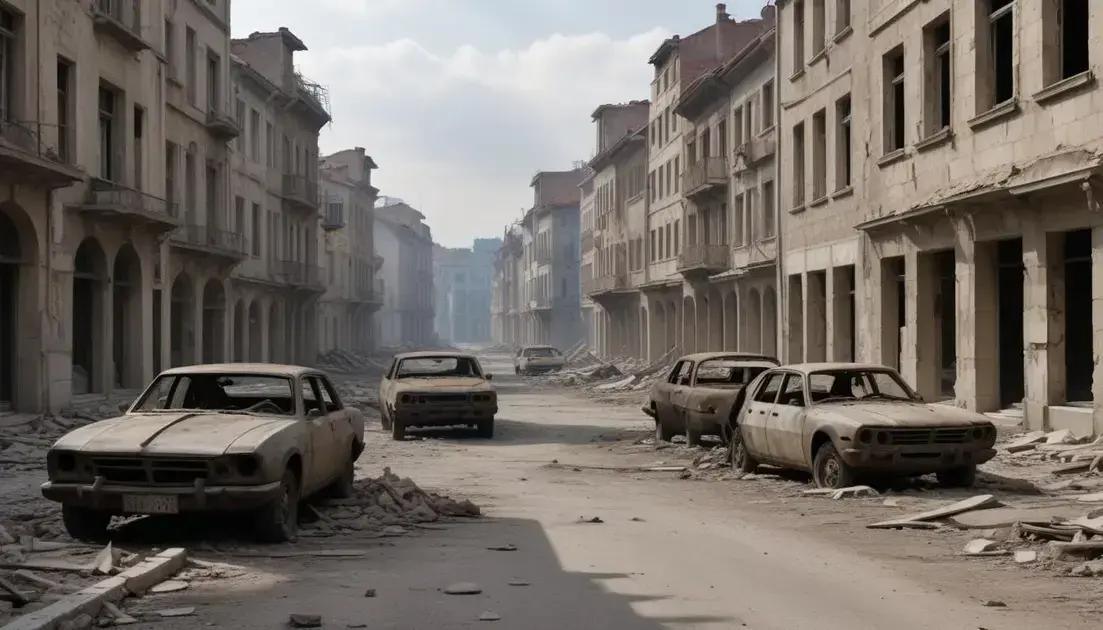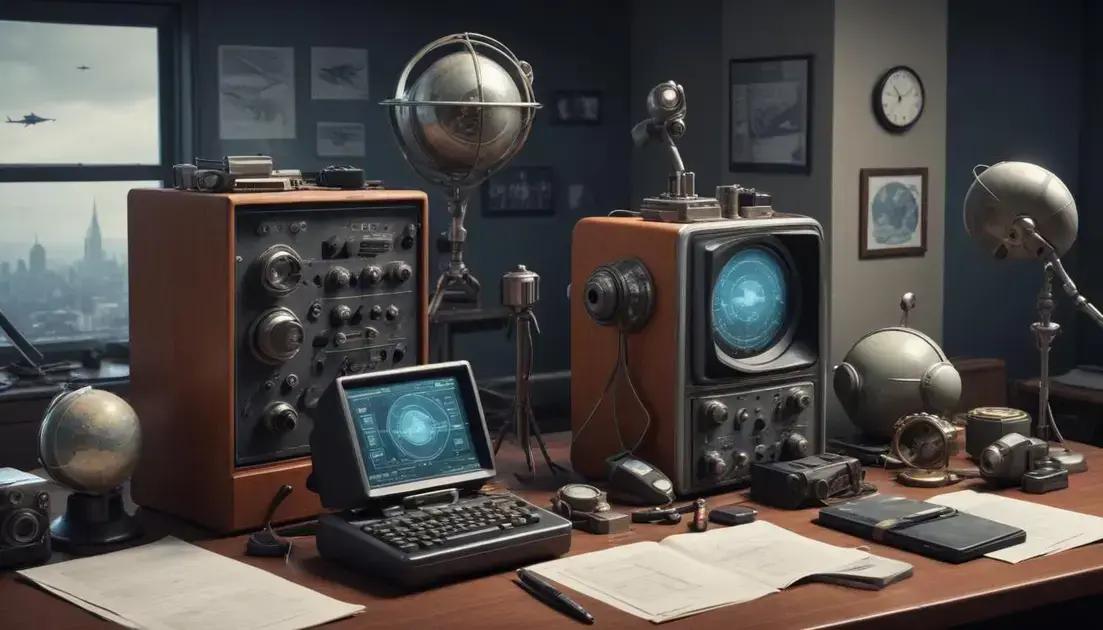
Yugoslavia in Ruins: The War That Divided Modern Europe
The breakup of Yugoslavia in the 1990s was fueled by deep-rooted nationalism, ethnic tensions, and historical conflicts. The aftermath saw significant challenges, including economic struggles and the challenge of rebuilding trust among communities. Key lessons from this period highlight the importance of open communication, responsible leadership, and education in fostering peace, as these factors can help prevent future conflicts. Understanding this complex history is crucial for promoting unity and reconciliation in the region today.
Yugoslavia has become a poignant symbol of how nationalism and ethnic strife can lead to devastating conflict. What really happened in the Balkans? Let’s dive in.
Introduction
The breakup of Yugoslavia was not just a simple event. It was a powerful mix of history, culture, and conflict. As various ethnic groups sought independence, a complex story unfolded. Each group had its own identity and history, which played a big part in the tensions that arose.
Nationalism drove many people to fight for their beliefs and rights. In many ways, it brought people together, but it also pulled them apart. Communities that once lived side by side found themselves divided by deep-rooted emotions and conflicts.
Different areas, such as Bosnia, Croatia, and Kosovo, experienced unique challenges. This diversity of experiences made the war different in each place. Many people still remember the struggles and losses from this time.
Poor communication and misunderstandings fueled hatred, making the situation worse. Leaders used these feelings to gain power, leading to even more violence. Understanding this backdrop is important to see how it shaped modern Europe.
The Roots of Conflict in Yugoslavia
The roots of conflict in Yugoslavia go way back in history. Many different ethnic groups lived together in this region. They shared some things, but they also had distinct identities. This mix created a complex situation.
Historical events played a big role in shaping these identities. For example, the Ottoman Empire ruled much of the Balkans for centuries. This influence left lasting marks on culture and religion.
After World War I, Yugoslavia was formed. It aimed to unite various ethnic groups under one nation. However, many groups felt they lost their unique identities. Tensions rose as each group sought more power.
The rise of nationalism in the 1980s added fuel to the fire. Leaders used nationalist feelings to rally support. This often led to protests and violence, as people wanted to assert their identities.
Economic struggles also contributed to the conflict. The recession hit the region hard. Many felt their communities were ignored, leading to anger and resentment. This was a recipe for conflict.
Understanding these roots is key to grasping why the war broke out. It wasn’t just about borders; it was about identity, history, and rights.
The Impact of Nationalism
Nationalism had a huge impact on the conflicts in Yugoslavia. It stirred deep feelings among various ethnic groups. As people became more aware of their identities, tensions grew.
National pride made many want to defend their culture and history. This feeling was strong across different groups, like Serbs, Croats, and Bosniaks. Each group believed it deserved respect and a voice.
Political leaders took advantage of this sentiment. They often pushed nationalist ideas to gain support. This led to rallies and protests where people expressed their desire for independence. However, it also sparked anger between different groups.
As nationalism rose, people started to see each other as threats. Neighbors who once got along found it hard to trust each other. The media played a role too. Stories often focused on the worst actions of competing groups, fueling hatred and fear.
Wars and violence became common as these feelings boiled over. Ethnic cleansing occurred, aiming to remove certain groups from areas. This brutal approach highlighted the extreme lengths some would go to protect their identities. The impact of nationalism led to a cycle of violence that transformed the region.
By exploring nationalism’s role, we can understand how it shaped the events that unfolded. It was not just about land; it was about belonging and identity.
Aftermath of the War
The aftermath of the war in Yugoslavia was devastating and complex. Many people faced loss, fear, and uncertainty. Cities were in ruins, and families were torn apart. Refugees scattered across Europe, looking for safety.
Rebuilding was slow and difficult. Communities felt deep scars from the violence. People struggled to find common ground after the brutal fighting. Trust was hard to rebuild, and old wounds took time to heal.
New countries emerged, each grappling with its identity. Countries like Croatia, Bosnia, and Serbia formed their own paths. They had to deal with the legacy of war and the challenge of uniting diverse populations.
Efforts for peace sometimes fell short. Many tried to establish reconciliation programs, but feelings of resentment lingered. The International Criminal Tribunal was created to address war crimes. This aimed to bring justice to the victims and hold perpetrators accountable.
Economically, the region faced tough challenges. The war left many areas impoverished. Unemployment rates soared, complicating efforts for recovery. Aid from other countries helped, but rebuilding would take many years.
Overall, the aftermath of the war in Yugoslavia was a raw and painful journey. Understanding this aftermath helps us see how history shapes present-day Balkan societies.
Lessons Learned
The conflicts in Yugoslavia taught us many important lessons. First, it showed how nationalism can unite but also divide people. Strong feelings about identity can have both positive and negative effects.
Another lesson is the power of communication. Misunderstandings can escalate quickly. Open dialogue is essential for peace. When groups talk openly, they can break down barriers.
Education is crucial in preventing future conflicts. Teaching people about different cultures fosters respect. This understanding can help avoid the fear that leads to violence.
The role of leadership also became clear. Good leaders can guide their people toward peace. However, leaders who exploit fear and division can lead to disaster. Responsible leadership is vital for harmony.
International involvement can help, but it must be thoughtful. Outside forces should support without taking control. This keeps nations from feeling threatened and preserves their sovereignty.
Finally, rebuilding after conflict takes time. Healing deep wounds needs patience and understanding. Communities must work together to restore trust and unity.
Conclusion
In conclusion, the breakup of Yugoslavia and its aftermath show us how important it is to understand nationalism and identity. These factors can create strong bonds but can also lead to division and conflict. Communication and education are vital tools for building peace in diverse communities.
Moreover, good leadership can guide people toward harmony, while poor leadership risks further chaos. The lessons learned from this history remind us that rebuilding trust and unity takes time and effort.
By reflecting on these experiences, we can foster a more inclusive and understanding world. Ultimately, it’s about learning from the past to create a better future for everyone.


